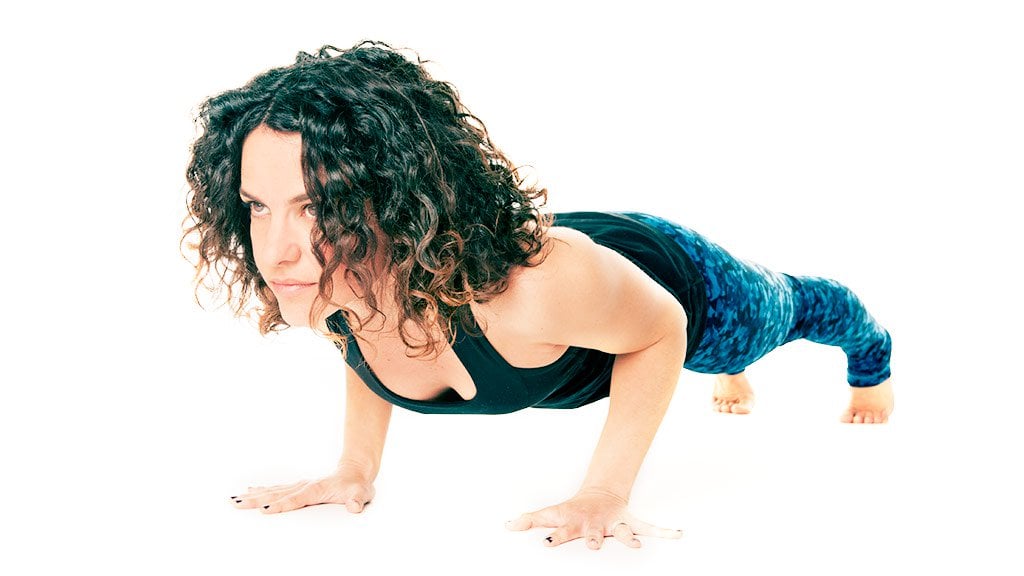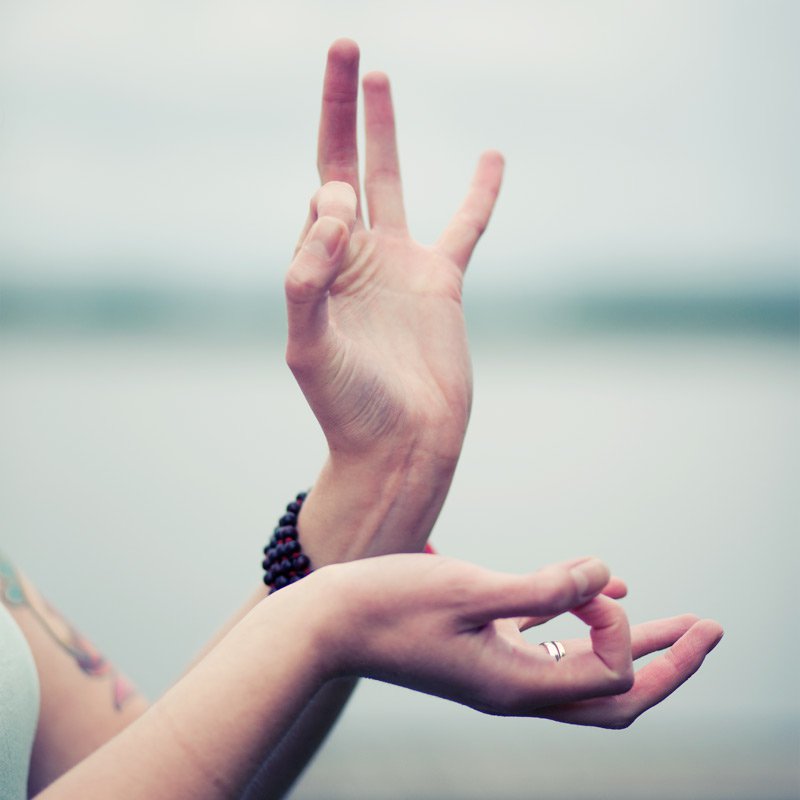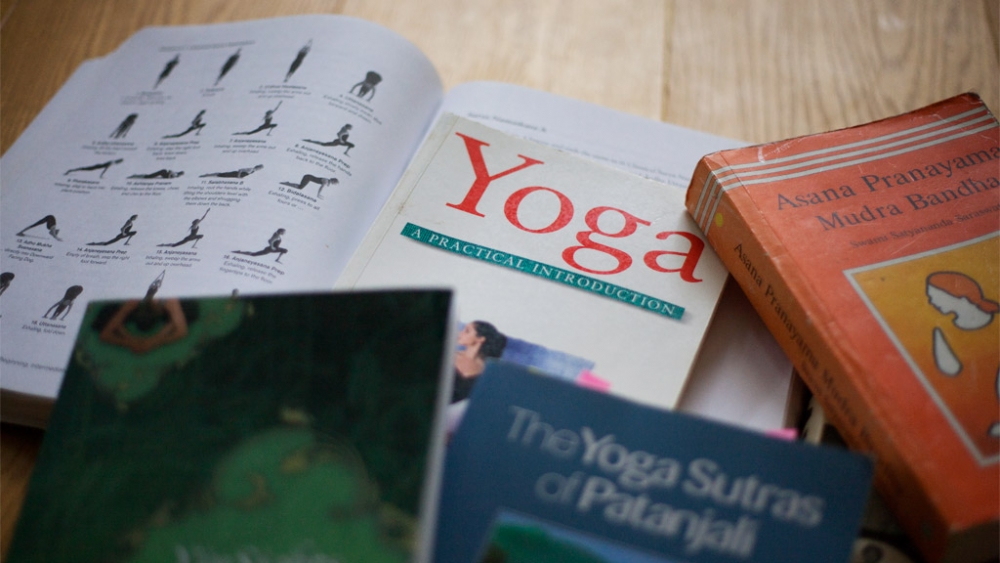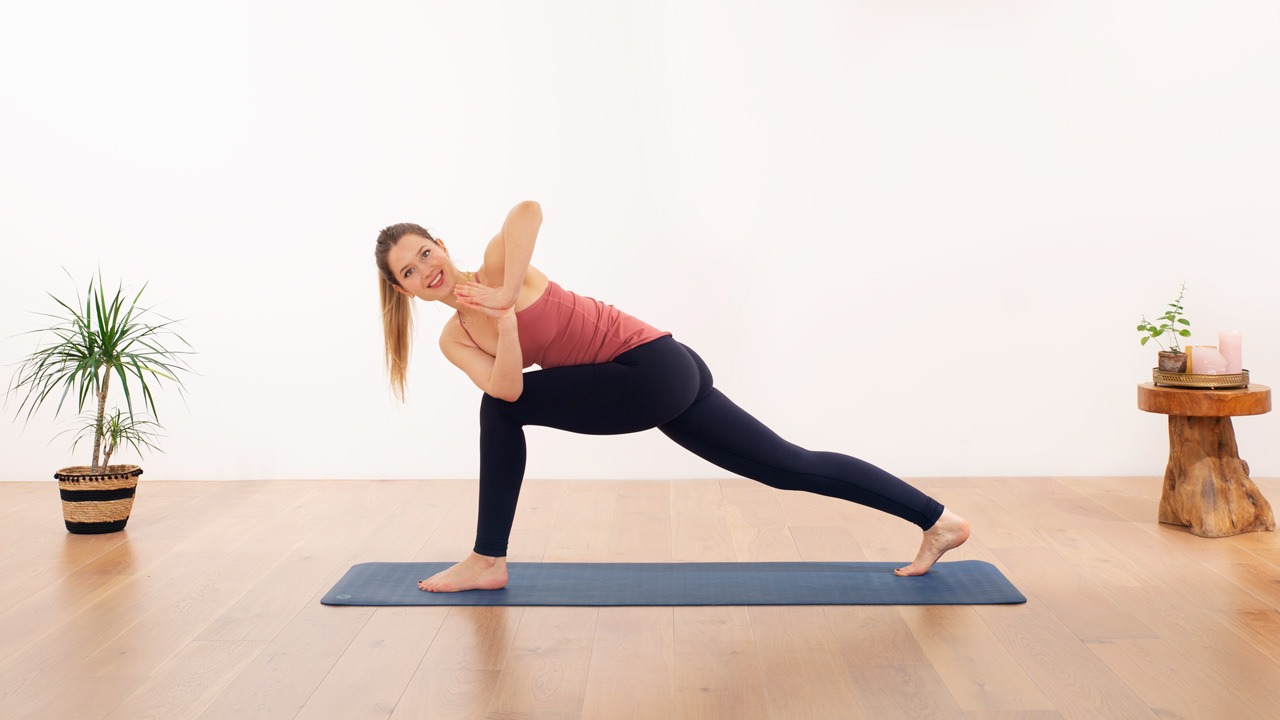If you’re new to yoga (or even if you’re not), you may have heard words in class that you don’t recognise. It might seem like your teacher is speaking in a language you’ve never heard. In fact, they probably are! The language of yoga is Sanskrit, which is the root of many Indian languages one of the oldest human languages of all. In this article, we’ll take a look at some of the terms you’re likely to hear in class.
If, like me, you’ve had the experience of being instructed to “engage your Mula Bandha”, or to “lift and spread your sit bones” but not had the first clue what they are, or where to locate them, here’s a basic glossary of some of the things you might hear in your yoga class. Because let’s face it, holding tree pose is challenging enough, without trying to figure out what Vrksasana is at the same time!
(Vrksasana is Sanskrit for Tree pose).
Common yoga terms
1. Yoga
– to ‘yoke’ or ‘bind’ – often interpreted as ‘union’ (the union of breath, body and mind).
Watch: Why do we practice yoga? with Andrew Wrenn
2. Asana
– literally translates as ‘seat’ – but the more modern interpretation of the word denotes physical postures or poses.
3. Bandha
– internal muscular ‘locks’ that, when engaged, support the toning and lifting of strategic areas of the body. The 3 major bandhas are:
- Mula Bandha – the pelvic floor muscles
- Uddiyana Bandha – the abdominals up to the diaphragm
- Jalandhara Bandha – the throat
- Learn more: The 4 main bandhas
4. Chakra
– meaning ‘wheel’ – energy centres in the body located between the base of the spine and the top of the head.
We have seven – Sanskrit names are in brackets
- the root – (Muladhara); base of the spine
- the sacral (Svadhisthana) – lower abdomen
- solar plexus (Manipura) – upper abdomen
- heart (Anahata) – centre of the chest
- throat (Vishuddha) – throat area
- third eye (Ajna) – forehead, between the eyebrows
- crown (Sahasrara) – the very top of the head
Practice: Chakra series program
5. Chaturanga
– four limbed staff pose or low plank, requires arm, shoulder and core strength.

- Learn more: Chaturanga – the four-limbed staff pose
- Practice: Want a perfect Chaturanga? – here’s some homework!
6. Core
– often thought of as the abdominal muscles. However, it’s more accurate to think of it like an apple core, running from the top of your head to the inner arches of your feet.
- Learn more: Core strength in your yoga practice
- Practice: Core strength for beginners
7. Downward dog (Adho Mukha Svanasana)
– one of the most common yoga poses, like an inverted ‘V’ shape.
- Learn more: Step-by-step guide to – Downward facing dog
- EkhartYoga members: Downward facing dog deconstructed – improve your downward facing dog with the help of the wall, chair and blocks – 40 min, all level class with Adela Serrano
8. Drishti
– focal point of gazing during meditation or yoga practice (useful during balancing poses!)
- Practice: Fundamentals of yoga – point of focus – focus your mind by focusing the gaze – 40 min, Hatha class, all levels with Adela Serrano
9. Hatha
– known as yoga for the physical body. In Sanskrit, “Ha” represents sun and “tha” represents moon. Hatha is the basic style of yoga that forms the basis for most styles of yoga, often used to describe slower-paced classes with no flow to them.
- Learn more: What is Hatha Yoga?
10. Heart centre
- refers to the centre of the chest. You’ll hear the term used as an instruction – for example, “lift your heart centre“. It can also be used to describe the location of the heart chakra – Anahata.
11. Mantra
– a word, sound or phrase repeated either out loud (chanting) or in the mind – said to increase concentration while meditating.
- Learn more: Mantra and vibration – a divine path to union
12. Mudra

– a hand position / gesture used to aid concentration, focus and connection to yourself during your meditation and asana practice. The most common are Anjali (pressing palms together at the heart) and Jnana (pronounced nyah-nah) (forefinger and thumb touching to form a circle, the other three fingers stretching away)
- Practice: An introduction to mudras – Enhance the benefits of yoga by introducing Mudra to your practice – 15 min class with Francesca Giusti
13. Nadi
– the energy channels through which prana or life force flows. Pranayama uses the breath to direct and expand the flow of prana in our energy channels – the nadis.
- Learn more: Pranayama – the benefits
14. Namaste
– roughly meaning ‘the light within me bows to the light within you’ and generally said at the end of a yoga class, bowing the head with palms pressed together at the heart.
15. Om
– (A-U-M) – a mantra usually chanted at the beginning and end of yoga classes. Om ia tiny word with a multitude of meanings – said to be the origin of all sounds and the seed of creation. Often quoted as the “universal sound of consciousness”.
- Watch: Everything changes – on the mantra AUM– 10 min talk / meditation with Irina Verwer
16. Patanjali
– 2nd / 3rd BCE sage said to have compiled the Yoga Sutras, a guide or ‘instruction manual on how to live in order to advance along a spiritual path towards enlightenment.
- Learn more: The 8 Limbs of Yoga explained
- Practice: The 8 Limbs of Yoga program – designed to help you dive deeper into your practice and gain a better understand of Patanjali’s yoga philosophy.
17. Prana
– life energy; life force.
- Practice: The art of moving prana – learn to unite breathing and movement, in this yoga class with James Reeves.
18. Pranayama
– breathing exercises which clear the physical and emotional obstacles in our body to free the breath and so the flow of prana – life energy.
- Learn more: What is Pranayama?
- EkhartYoga members: Ten days of Pranayama – develop a regular pranayama practice with this ten-day program
19. Sacrum
– a triangular-shaped bone in the lower back.
- Learn more: The spine: the fountain of youth
- Practice: Get your healthy back back – a simple practice which explores how opening the hips and freeing the sacrum can lead to better back health and an overall sense of well-being, with James Reeves.
20. Savasana
– meaning Corpse pose – relaxation pose, typically practiced at the end of a yoga class.

- Learn more: Why is Savasana so important?
- EkhartYoga members: Guided relaxation for stress, anxiety and a good night’s sleep – with Andrew Wrenn
21. Shanti
– meaning ‘peace’ – sometimes chanted in class.
22. Sit / Sitting bones
– part of the pelvis – the two bony protrusions on the underside of the buttocks that are most easily felt when sitting on a hard surface.
23. Sternum
– breastbone – long, flat narrow bone that runs vertically down the centre of the chest.
24. Surya Namaskar
– Sun salutations – a sequence of asanas. This dynamic yang sequence is a very popular sequence often used to warm up the body at the start of a yoga class.
25. Tailbone
– the little bone at the end of your spine.
26. Ujjayi
– commonly translated as the ‘victorious breath’ or ocean breath because of the sound the breath makes at it enters and leaves a slightly constricted throat.
- Practice: Breathing with sound – ujjayi – explore the sound of the Ujjayi breath – 10 mins, pranayama class with Joey Miles
27. Upanishad
– a collection of yogic texts of a religious and philosophical nature, written in India probably between c. 800 BCE and c. 500 BCE.
28. Vinyasa
– movement linked with breath. Postures are strung together in a short or longer flow.
- Learn more: Explore Vinyasa yoga and try the style out in Rose’s 6 part program for beginners.
29. Yang yoga
– style of yoga that is more rhythmic, repetitive and energetic – great for building strength and fitness.
- Learn more: Balancing the Yin and Yang in your practice
30. Yoga Nidra
Also known as “yogic sleep” or “effortless relaxation”, Yoga Nidra can be described as the conscious state between wakefulness and sleep. It invites a state of harmonious, restful being. From here, we can be healed, restored and awakened to our deepest, all-knowing, all-welcoming self.
- Learn more: What is Yoga Nidra?
31. Yin yoga
– series of long-held, passive floor poses that target the fascia and connective tissues in the body. We need a combination of Yin and Yang in yoga (as in life!) to keep us balanced and healthy.
- Learn more: The benefits of Yin yoga
- Practice: 7 Days of Yin Yoga program
Related:
*one is a yoga pose, the other is a fried burrito
Article updated: January 2021


